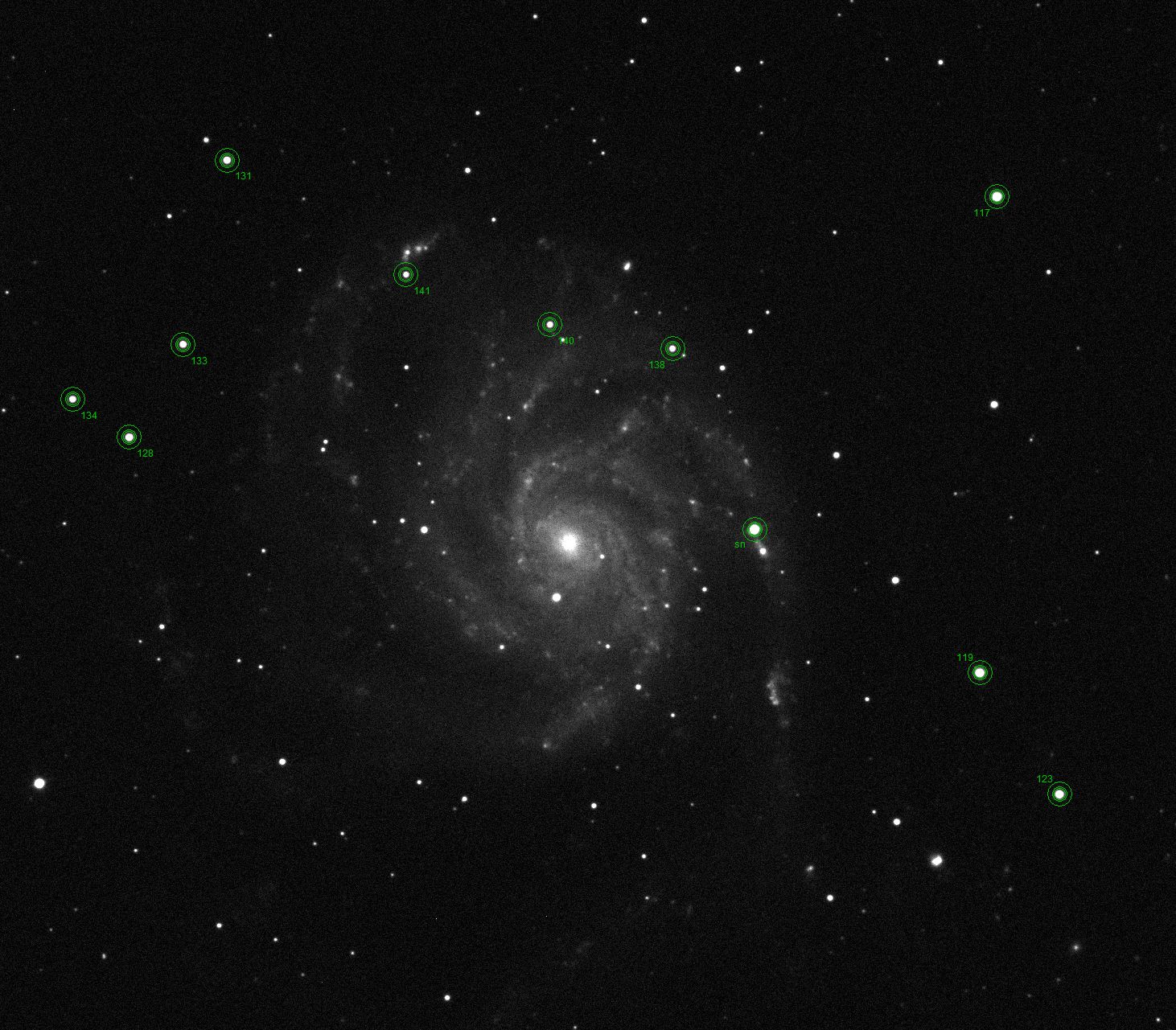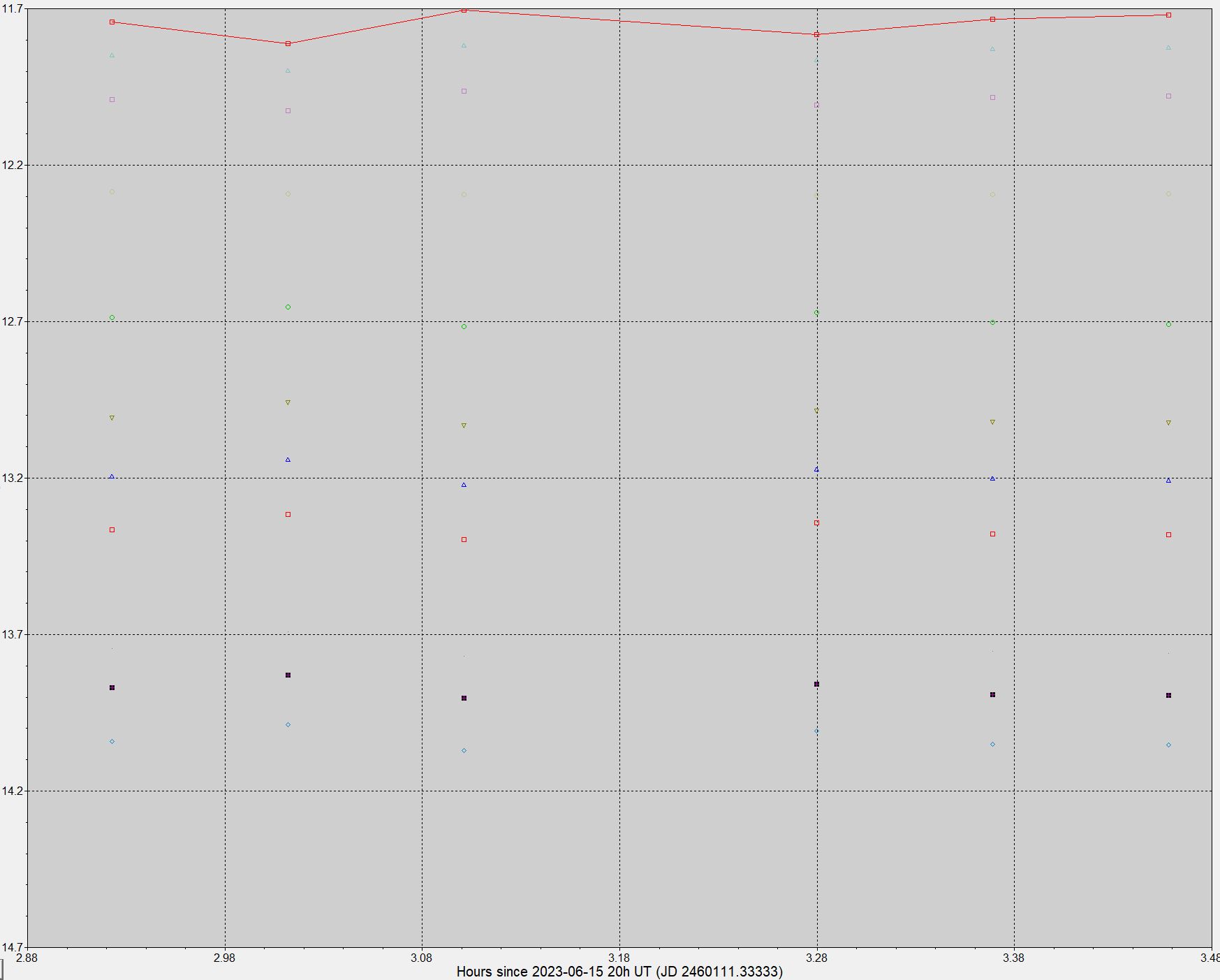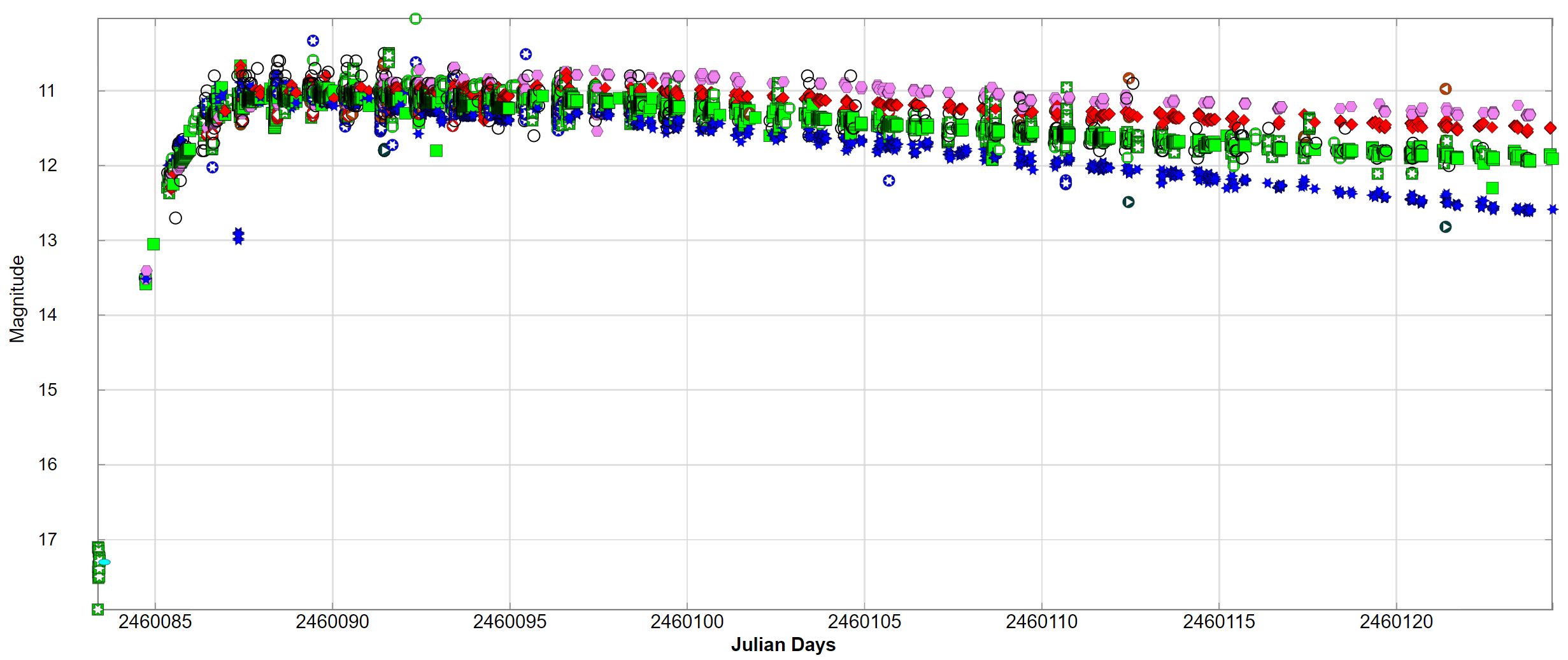A new supernova went off in M101, the Pinwheel galaxy. After imaging it once, I also tried my hand at some photometry. Due to a long spell of bad weather, I was able to perform my first measurement more than one month since the discovery and more than two weeks since taking my first image.
To this end I:


The picture above depicts a linear, screen-stretched calibrated frame with reference stars tagged, while the picture below contains the plot of the reference star magnitudes and the resulting magnitude estimates of supernova SN 2023ixf.
A sample of only six frames is probably not accurate enough. Anyway, the computation yields an estimate of 11.75 +/- 0.04 magnitudes for SN 2023ixf. This is reasonably consistent with the official measurements (see image at bottom with light curve from AAVSO) although there can be differences since a V filter is roughly equivalent to a green filter, while an L filter has a much wider bandwidth.
Bottom line: I don't know how reliable my estimate is, but it was a fun and interesting exercise nevertheless!


Leave a comment